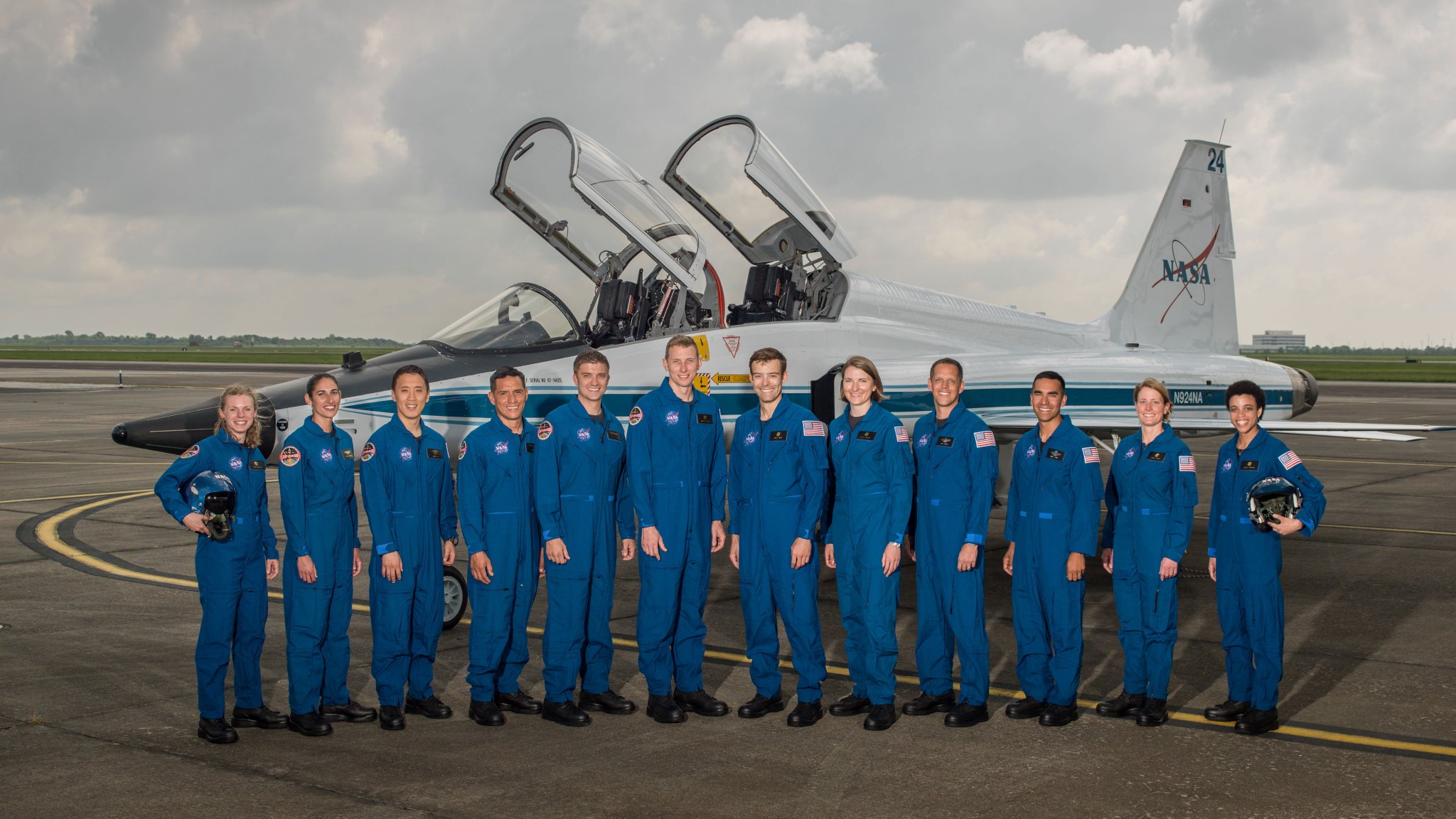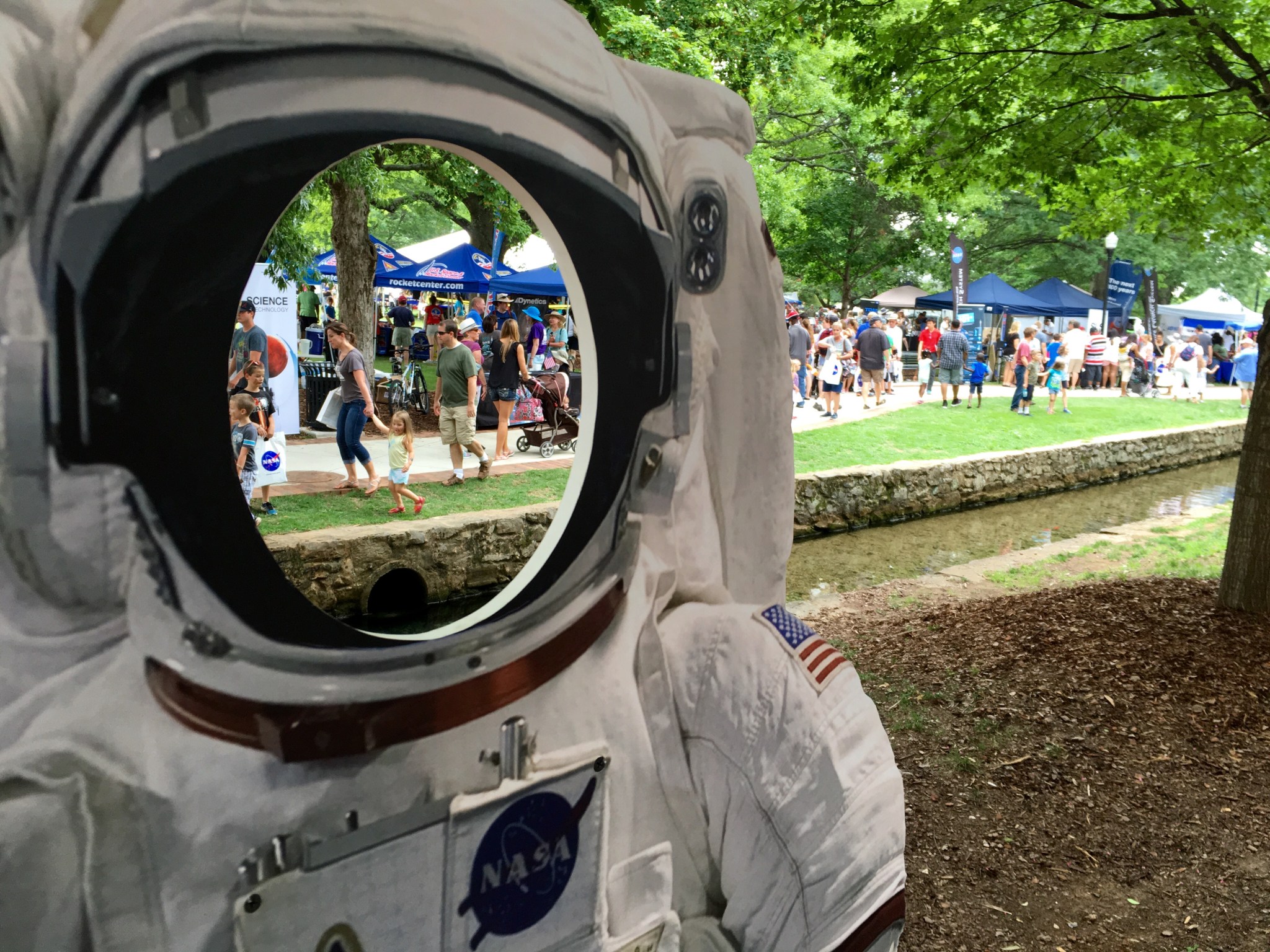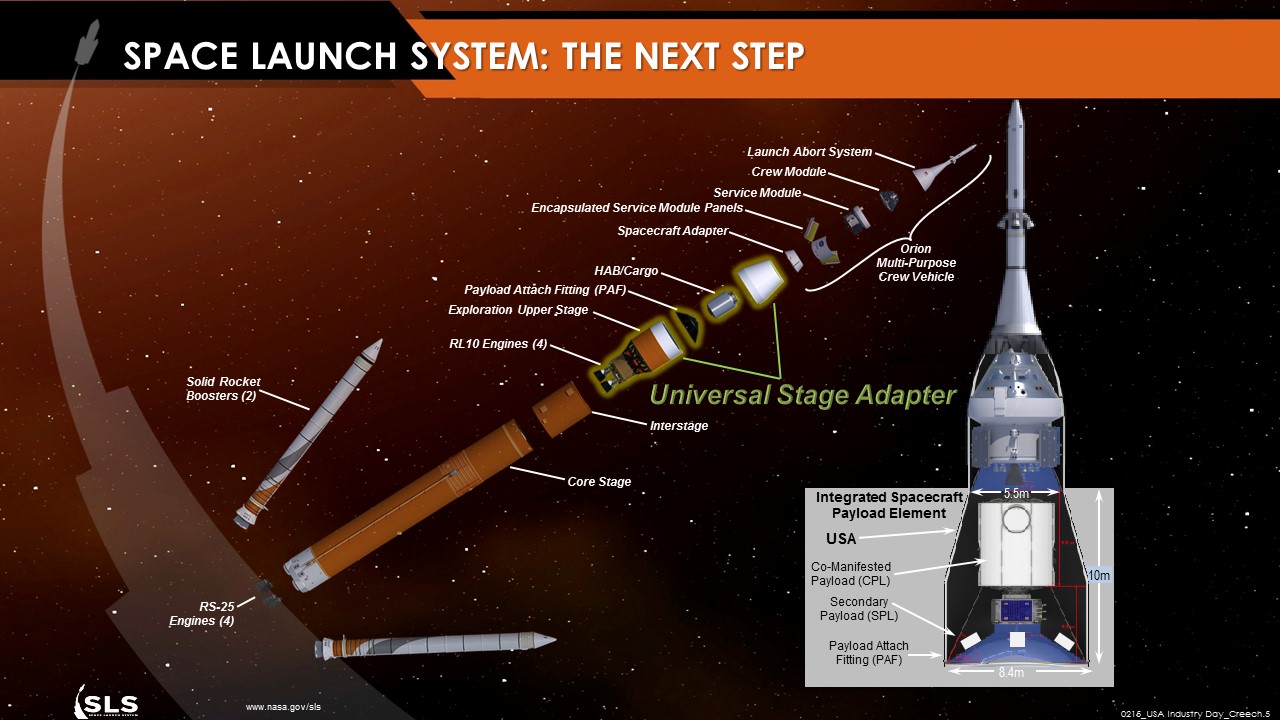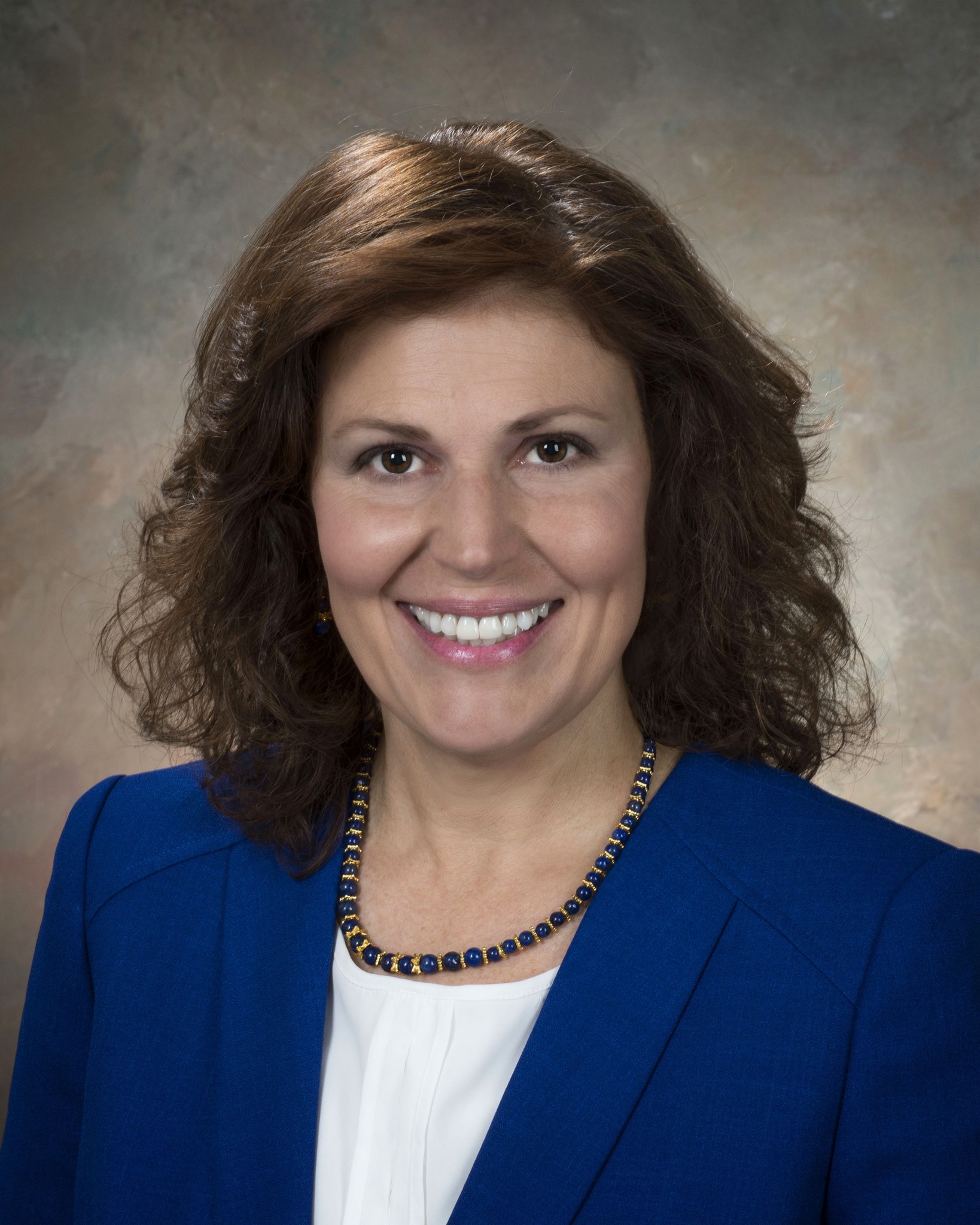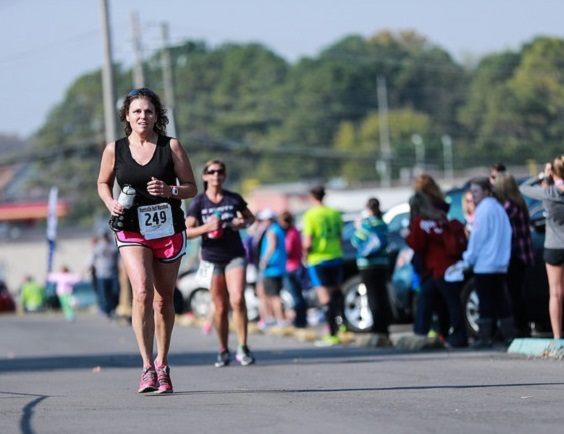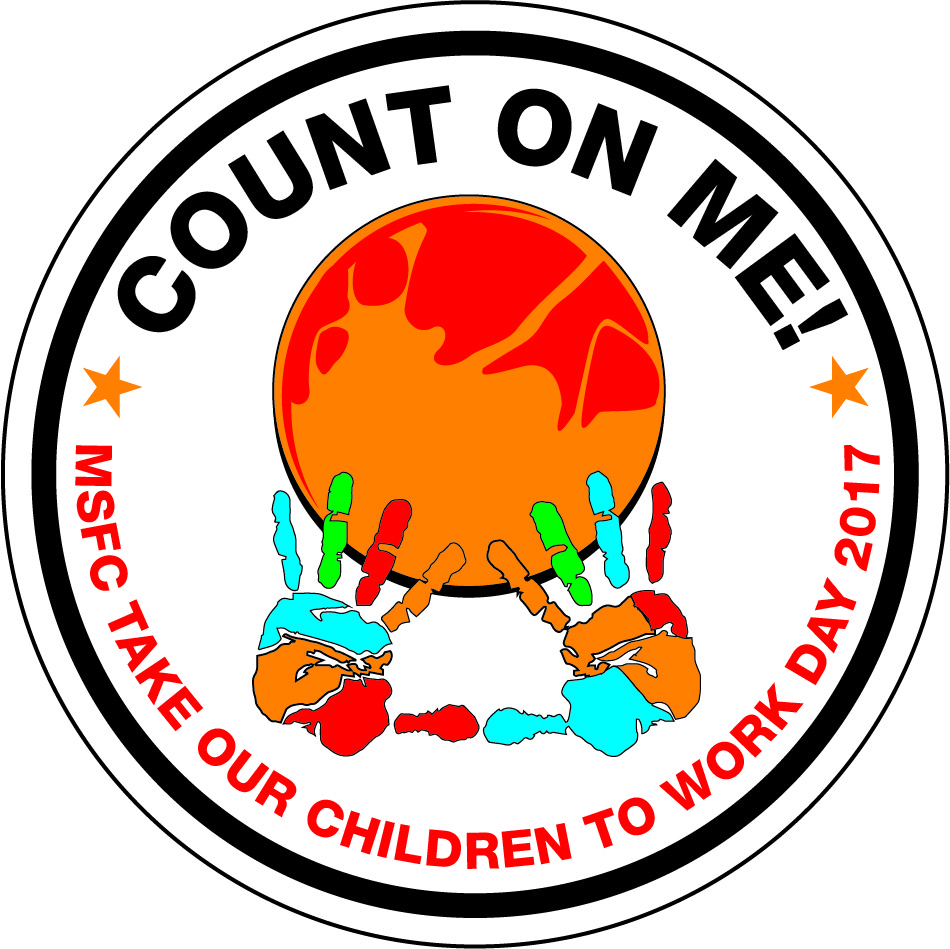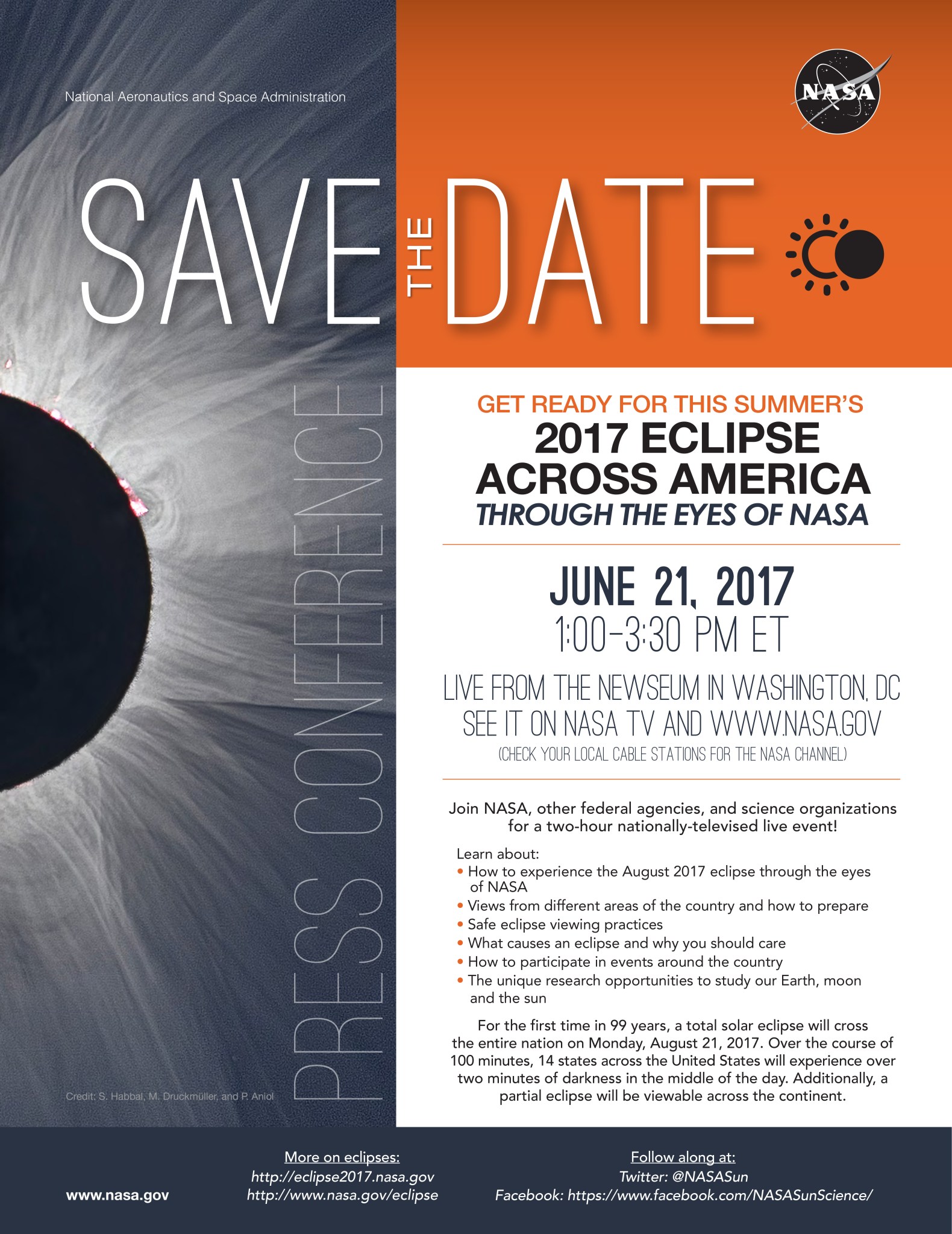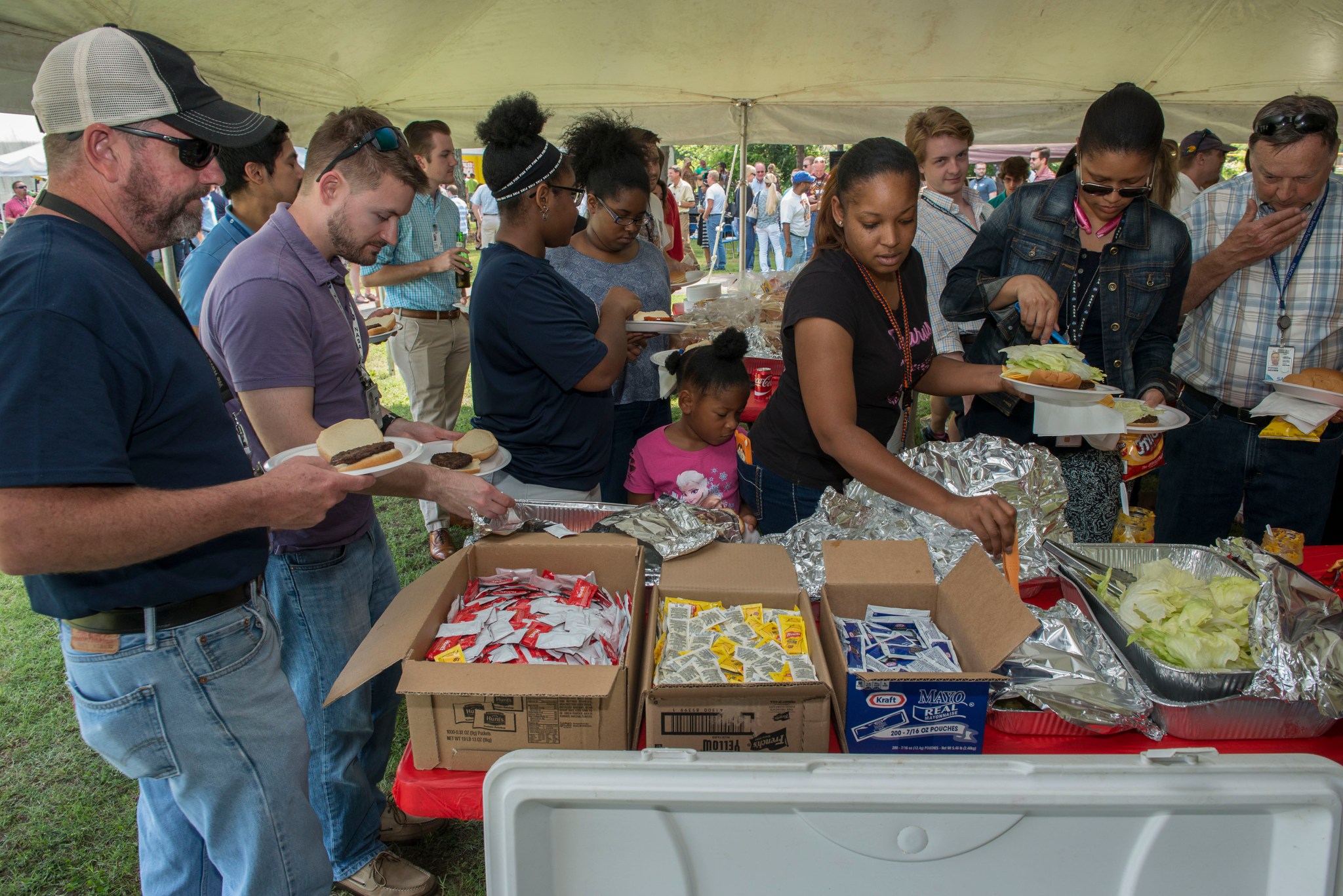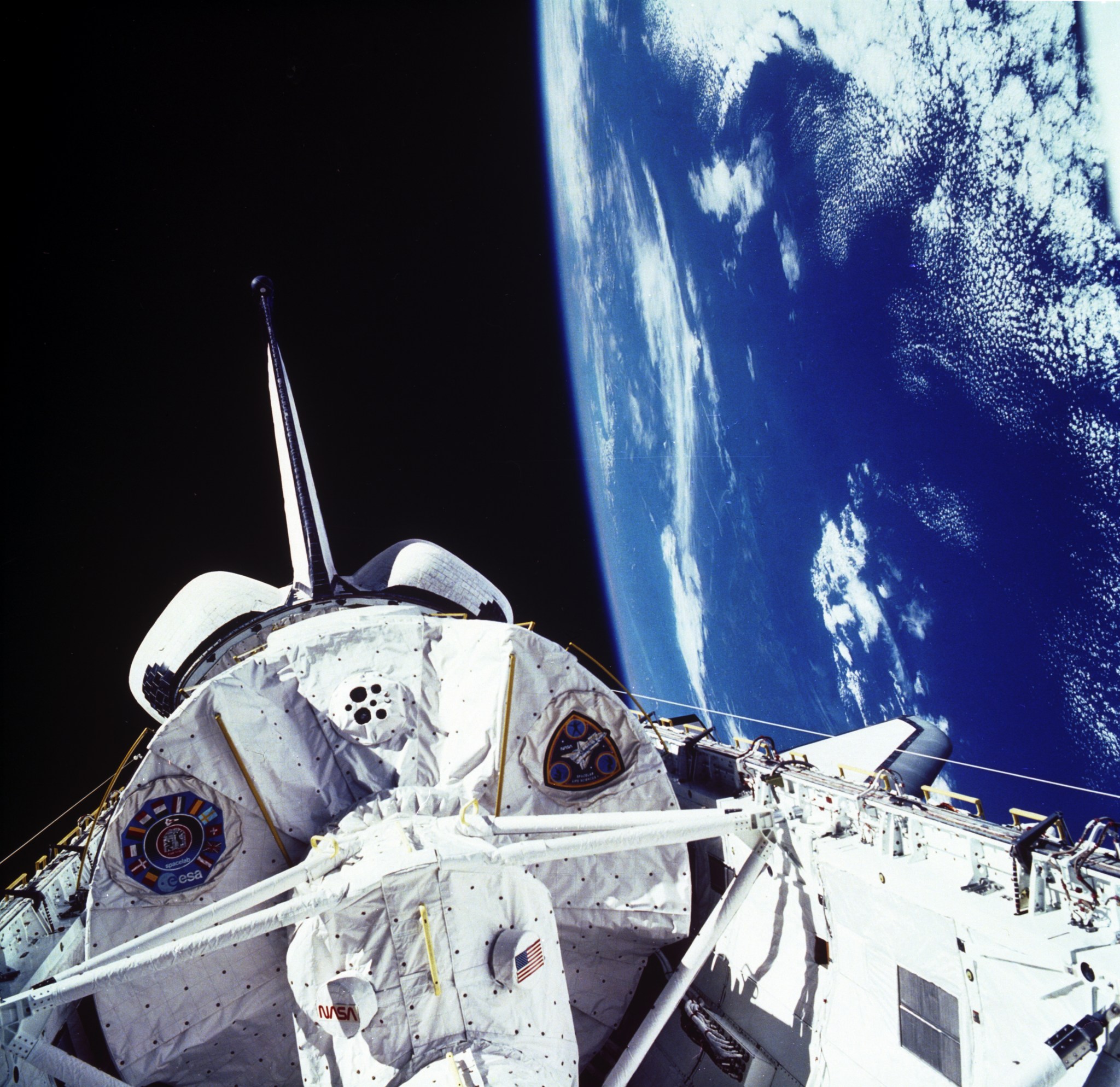In This Week’s Star
- NASA’s Newest Astronaut Recruits to Conduct Research off the Earth, for the Earth and Deep Space Missions
- NASA in the Park Returns to Downtown Huntsville June 17, Team Members Invited
- NASA Awards Universal Stage Adapter Contract for SLS Rocket
- Three DIY CubeSats Score Rides on NASA’s First Flight of Orion, Space Launch System
- Marshall’s Lisa Hall Sets Bar High, Challenges Federal Workers to Do Same Through Employee Viewpoint Survey
- Registration Now Open For ‘Take Our Children to Work Day’ June 22
- NASA to Kick Off ‘Eclipse Across America’ Celebration with Live TV, Streaming Event June 21
- Free2Be Founder to Speak at Marshall LGBT Event June 15
- Marshall Team Gathers For ‘Summer Blast’ June 8
- This Week in NASA History: Fifth Spacelab Mission Returns to Earth — June 14, 1991
NASA’s Newest Astronaut Recruits to Conduct Research off the Earth, for the Earth and Deep Space Missions
After receiving a record-breaking number of applications to join an exciting future of space exploration, NASA has selected its largest astronaut class since 2000. Rising to the top of more than 18,300 applicants, NASA chose 12 women and men as the agency’s new astronaut candidates.
Vice President Mike Pence joined NASA leaders June 7, as they introduced the members of the 2017 astronaut class during an event at the agency’s Johnson Space Center.
“These are 12 men and women whose personal excellence and whose personal courage will carry our nation to even greater heights of discovery and who I know will inspire our children and our grandchildren every bit as much as your forebears have done so in this storied American program,” said Pence. “And to this newest class of astronauts, it’s my honor to bring the sincere congratulations of the 45th president of the United States of America, President Donald Trump. Your president is proud of you, and so am I.”
NASA Marshall Space Flight Center’s Bobby Watkins, director of the Human Exploration Development & Operations Office, was on the committee that selected the final group of 12 to join the ranks of American astronauts.
“It is one of the more challenging tasks I’ve had to perform in my career and yet I wouldn’t trade the experience for anything,” Watkins said. “This is my third astronaut selection committee and it may have been the most difficult. We had to narrow our selection from a large group of impressive, highly-qualified candidates to select only a few. We needed to find exceptionally smart and experienced people who can spend long periods of time with the same crew members in a confined space, and I think we succeeded with this very impressive group.”
The astronaut candidates will return to Johnson in August to begin two years of training. Then they could be assigned to any of a variety of missions, including: performing research on the International Space Station, launching from American soil on spacecraft built by commercial companies and departing for deep-space missions on NASA’s new Orion spacecraft and Space Launch System rocket.
Those who are assigned to the space station will be working closely with Marshall team members in the Payload Operations Integration Center — mission control for science on the station.
“We look forward to the energy and talent of these astronauts fueling our exciting future of discovery,” acting NASA Administrator Robert Lightfoot said. “Between expanding the crew on board the space station to conduct more research than ever before, and making preparations to send humans farther into space than we’ve ever been, we are going to keep them busy. These candidates are an important addition to the NASA family and the nation’s human spaceflight team.”
Applicants included U.S. citizens in all 50 states, the District of Columbia, and U.S. territories Puerto Rico, Guam and American Samoa. The talented women and men selected for the new astronaut class represent the diversity of America and the career paths that can lead to a place in America’s astronaut corps.
A complete list of the new astronaut candidates and short biographies can be found here.
NASA in the Park Returns to Downtown Huntsville June 17, Team Members Invited
NASA’s Marshall Space Flight Center and Downtown Huntsville Inc. will return to Big Spring Park East June 17, for the annual celebration of NASA and the city of Huntsville — NASA in the Park. Marshall team members are invited to attend the event, which will be held from 10 a.m. to 3 p.m.
“NASA in the Park is a terrific opportunity for our team to show the greater Huntsville community how we are helping our nation lead the global effort to explore our world and beyond, and have fun in the process,” said Marshall Center Director Todd May. “The Tennessee Valley is so much more than just our home, it is our most important partner and advocate — it gives us a terrific place to live, work, and raise a family.”
The downtown event will feature exhibits and demonstrations to share Marshall’s work with the public, as well as performances by Marshall musicians, educational activities and games for all ages.
Visitors can experience the excitement and mystery of space exploration, see and touch the mighty RS-25 rocket engine that will power humans farther in space than ever before, check out how Marshall does 3-D printing and talk with engineers and scientists who are leading the way to new discoveries.
Retired NASA astronaut Robert “Hoot” Gibson — a veteran of five space shuttle missions — will visit with the public throughout the day.
At 10:45 a.m., Gibson and May will lead a parade around the park with kids who attend the Marshall Child Development Center, accompanied by their families.
At 11 a.m., there will be a short program at the music stage with songs from the Marshall preschoolers and remarks from Gibson, May, Huntsville Mayor Tommy Battle and Downtown Huntsville Inc. CEO Chad Emerson.
NASA Awards Universal Stage Adapter Contract for SLS Rocket
NASA has selected Dynetics, Inc. of Huntsville to develop and build a universal stage adapter for the agency’s Space Launch System. The adapter will connect NASA’s Orion spacecraft and provide additional cargo space for the future configurations of the rocket containing an exploration upper stage.
Under the contract, Dynetics will design, develop, test, evaluate, produce and deliver the first universal stage adapter for the second integrated mission of SLS and Orion, known as Exploration Mission-2, or EM-2. This mission will be the first test flight with crew aboard NASA’s new deep-space exploration systems.
This cost-plus-award-fee contract has a maximum potential value of $221.7 million and a potential performance period of 11 years, which includes a four-year base period that begins Aug. 1, and six options, allowing NASA to order up to six additional adapters for missions beyond EM-2.
The universal stage adapter will house and protect large co-manifested payloads, such as habitats and deep-space exploration spacecraft, and secondary payloads including CubeSats. SLS with the exploration upper stage for EM-2 is expected to lift more than 231,000 pounds from Earth’s surface.
The universal stage adapter will stand 32.4 feet tall and will measure 27.6 feet in diameter at its largest point, and will provide environmental control to payloads during ground operations, launch and ascent, while also accommodating the electrical and communication paths between the exploration upper stage and Orion.
SLS, the world’s most powerful rocket, will launch astronauts aboard Orion to deep space, sending humans farther into the solar system than ever before as NASA prepares for missions to Mars.
Three DIY CubeSats Score Rides on NASA’s First Flight of Orion, Space Launch System
NASA’s Space Technology Mission Directorate has awarded rides for three small spacecraft on the agency’s newest rocket, and $20,000 each in prize money, to the winning teams of citizen solvers competing in the semi-final round of the agency’s Cube Quest Challenge.
The three winning teams secured space to launch their CubeSats on Exploration Mission-1, the first integrated flight of NASA’s Space Launch System and Orion spacecraft. Once deployed, the CubeSats will vie for a share of a $5 million prize in the first-ever competition in deep space. The three teams are:
- Cislunar Explorers, Cornell University, Ithaca, New York
- CU-E3, University of Colorado in Boulder
- Team Miles, Fluid & Reason, LLC, Tampa, Florida
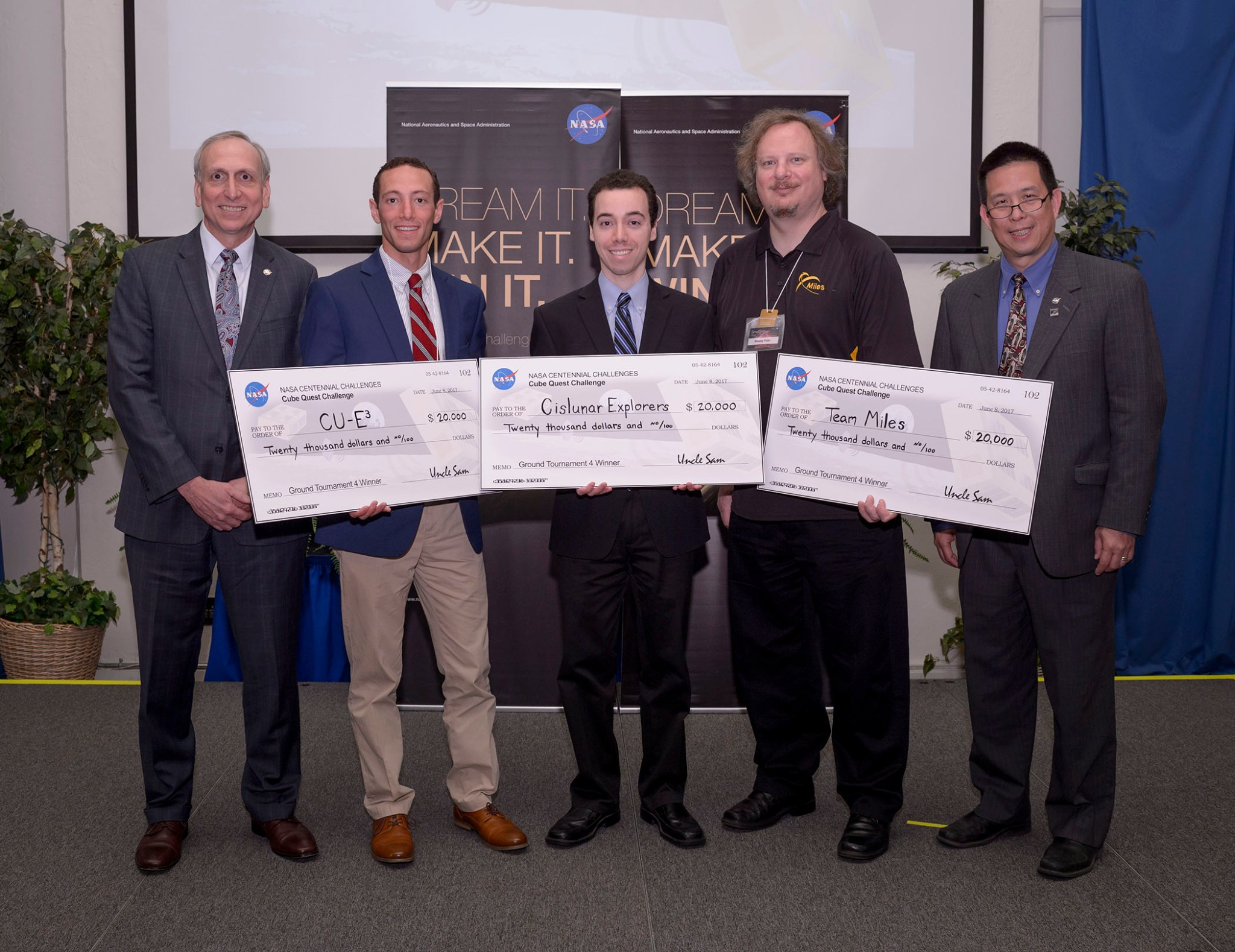
“We are delighted in the profound achievements of these teams,” said Steve Jurczyk, STMD associate administrator. “Each team has pushed the boundaries of technology and innovation. Now, it’s time to take this competition into space — and may the best CubeSat win.”
Tucked into the Orion stage adapter — the ring that connects Orion to the SLS rocket — the CubeSats will deploy after the Orion spacecraft separates from SLS and starts on its journey into deep space.
These small satellites are each about the size of a large shoebox and designed to be efficient and versatile. As some of the first CubeSats to operate in deep space, they will drive advances in small spacecraft propulsion and communication technology.
“Opening our first SLS test flight beyond the moon to citizen inventors and the scientific community creates a rare opportunity for these small spacecraft to reach deep space,” said Bill Gerstenmaier, associate administrator of NASA’s Human Exploration and Operations Mission Directorate. “These CubeSat-class payloads are expanding our ability to explore by demonstrating affordable and innovative capabilities relevant to future deep-space missions.”
The final phase of the Cube Quest Challenge comprises two segments — the Deep Space Derby and the Lunar Derby. In the Deep Space Derby, teams must demonstrate communications capabilities from a range of at least four million kilometers from Earth — more than 10 times the distance to the moon — while the Lunar Derby requires teams to achieve a lunar orbit where they will compete for near-Earth communications and longevity achievements. Prizes will be awarded for orbiting the moon, communicating the fastest and farthest and surviving the longest.
The Cube Quest Challenge offers a total of $5 million, NASA’s largest-ever competition prize purse, to teams that meet the challenge objectives of designing, building and delivering flight-qualified, small satellites capable of advanced operations near and beyond the moon.
The challenge is a part of NASA’s Centennial Challenges program, based at the agency’s Marshall Space Flight Center. Centennial Challenges is a part of the agency’s Space Technology Mission Directorate. The challenge is managed at NASA’s Ames Research Center.
Marshall’s Lisa Hall Sets Bar High, Challenges Federal Workers to Do Same Through Employee Viewpoint Survey
By Rick Smith
Employees across NASA’s Marshall Space Flight Center recently may have met Lisa Hall in a staff meeting or other team assembly, or soon might. The Marshall organization development specialist is promoting participation in the Federal Employee Viewpoint Survey, encouraging civil service employees to exercise their voices “to keep our organizations and our center healthy.”
If anyone knows the importance of good health, it’s Hall. In 1995, the human resources specialist was hospitalized with a gastrointestinal condition — and her whole life radically changed. Upon discharge, she was hit with a startling series of neurological challenges — weakness, fatigue, disorientation, phantom odors and similar assaults on her other senses. She could no longer drive, nor even walk very far. The overwhelming barrage of visual, auditory and olfactory stimuli often left her feeling semiconscious.
“I believe each of us has a deep reserve of strength, but we may not realize its depth until we’re put to the test,” Hall said. The next seven years tested her reserve to its limits. Unable to work, barely able to leave her house, she saw physician after physician at top national medical centers. None could accurately diagnose or treat her strange malady. She began using a cane for mobility, and sometimes a wheelchair.
“I was frustrated,” she said, “but it’s important to move forward and make the most of life.” In 2002, her 38th doctor identified the condition as an autonomic nervous system disorder, possibly caused by a high fever or by the powerful steroids she’d been administered during her 1995 hospitalization — and potentially related to a lightning strike she survived in 1977.
Even after her condition had been identified and proper medications prescribed, Hall was left with a long road back to her old life as the medication slowly took effect. As she bid farewell to the cane and wheelchair, she embarked on an empowering routine of diet, running and weight training to optimize her physical health. Struggling to revive her career, she made a decision that would provide emotional healing as well.
“I had basically lost a decade of my life,” she recalled. “I had no formal medical training, but I wanted to try to prevent others from experiencing what I’d endured.”
She began writing a memoir about her experience, which evolved into a comprehensive patient reference guide. Her book, “Taking Charge of Your Own Health,” was released by Harvest House Publishers in 2009. It features interviews with 70 medical experts and covers everything from patient rights and responsibilities to managing medications, dealing with misdiagnoses and finding solutions for coping with pain.
The wheelchair now long behind her, she runs today for the pleasure of it. She has taken part in more than 30 marathons and ultra-marathons, holds three state records for completing 50-mile races, and in 2015 finished her first 100-mile race. She has worked in Marshall’s Office of Human Capital since 2012 and became a full-time NASA employee in 2016. She enjoys sharing her story to encourage others to be proactive with their health and their lives, including their work environment.
“When you’re determined to make a positive change, you will find untapped potential and capabilities,” she said. “We have an opportunity to be heard, to influence the future of our center and our agency. I encourage every employee to take part in the survey!”
More about the survey
Orchestrated by the Office of Personnel Management, the Federal Employee Viewpoint Survey is designed to take the pulse of federal agency workers nationwide, determining where each agency is succeeding in terms of employee satisfaction and where changes or improvements will enhance the successful execution of duties.
Marshall seeks at least 80 percent participation among civil-service team members by the survey’s conclusion on June 22, Hall said. On June 14, approximately 60 percent of Marshall employees had responded.
The email-based survey takes approximately 25 minutes to complete. Participation is voluntary and all responses are confidential. Employees hired or made permanent after October 2016 will not receive the survey. Eligible civil service employees who have not yet received an email invitation should contact OPM at EVNN@opm.gov.
Smith, an ASRC Federal/Analytical Services employee, supports Marshall’s Office of Strategic Analysis & Communications.
Registration Now Open For ‘Take Our Children to Work Day’ June 22
Team members across NASA’s Marshall Space Flight Center are encouraged to visit ExplorNet to register their children and grandchildren for Marshall’s “Take Our Children to Work Day” June 22. All children in grades 3-12 are welcome to participate.
Organized by Marshall’s Office of Diversity and Equal Opportunity, the annual event will include hands-on activities, guided facility tours and demonstrations by Marshall team members and representatives of various local partner organizations.
Among options this year for participating young people are tours of Marshall’s Payload Operations Integration Center in Building 4663, where NASA manages International Space Station science, and of the Flight Dynamics Laboratory’s unique flat-floor facility in Building 4619; a Boeing Company-sponsored demonstration of the Remote Advanced Payload Test Rig, or RAPTR, which supports space station payload development; and a presentation of the 2016 animated motion picture “Sing,” complete with refreshments.
A full schedule of activities is expected to be available on ExplorNet by June 15. A link to the agenda and expanded details about the day’s activities will appear in the June 21 Marshall Star.
Children 15 and younger accompanied by a NASA employee do not require badging for admission to Redstone Arsenal and Marshall.
But Marshall Equal Employment Manager Abbie Johnson cautioned parents and guardians to supervise participating young people at all times. Marshall is home to numerous research facilities, test stands and laboratories, she noted, many of which include potentially dangerous or hazardous operations. “Exercise caution when touring these facilities with young people, and be sure to keep them well away from construction sites,” she said.
Besides being an ideal opportunity to show young people how their family members contribute every day to America’s space program, “Take Our Children to Work Day” challenges kids to study technical subjects in the classroom — and eventually pursue careers in the STEM fields of science, technology, engineering and mathematics.
Email Abbie Johnson in the Office of Diversity and Equal Opportunity for more information.
NASA to Kick Off ‘Eclipse Across America’ Celebration with Live TV, Streaming Event June 21
As the nation nears its best opportunity in a century to experience a total solar eclipse — one visible all across the continental United States on Aug. 21 — NASA will kick off its own eclipse celebration June 21 with a live TV and web streaming event from the Newseum interactive museum in Washington.
NASA, other federal agencies and a variety of national science organizations will team for “Eclipse Across America: Through the Eyes of NASA,” a two-hour, nationally televised and livestreamed event set to occur June 21 from noon to 2:30 p.m.
During the program, NASA experts and other researchers will explain the science of an eclipse and its impact here on Earth; discuss unique lunar, solar and Earth-based research planned during the rare but natural event; share safe viewing tips; and identify best places across the country to experience it all through the eyes of NASA.
Team members are encouraged to tune in via NASA TV and NASA online.
Marshall researchers will conduct science experiments and contribute to outreach events and public activities throughout the region leading up to and during the eclipse. Details will appear in upcoming issues of The Marshall Star.
The total solar eclipse will take place over the course of 100 minutes on Aug. 21, as 14 states across the country will experience more than two minutes of darkness in the middle of the day. Most of the rest of the continental United States will experience a partial eclipse during that period.
The last total solar eclipse visible over the lower 48 states occurred in 1979, while the last eclipse of this magnitude, visible across so much of the country, took place in 1918.
For more eclipse information, click here. Follow NASA’s preparations for the big event on Facebook and Twitter.
Free2Be Founder to Speak at Marshall LGBT Event June 15
By Jonathan Deal
NASA’s Marshall Space Flight Center team members are encouraged to attend an event June 15 to celebrate the contributions of individuals from the Lesbian, Gay, Bisexual or Transgender community from 11 a.m.-12:30 p.m. in Building 4200, Room P110.
LGBT team members have proven to be valuable assets to Marshall and NASA’s diverse workforce and their work continues to be vital to the agency’s need for innovation in its science, engineering and exploration endeavors.
“At NASA, we value and acknowledge the many achievements and contributions of our LGBT employees throughout our history,” said NASA Acting Administrator Robert Lightfoot. “Members of this community contribute to the richness of our diversity as an agency, and they play vital roles every day in all aspects of our human space exploration, science, technology and aeronautics activities.”
James Robinson, founder and CEO of Free2Be, Inc. of Huntsville, will headline the event, themed “Forward Together: Diverse People, Diverse Thoughts, Diverse Solutions.” Robinson founded Free2Be, which is dedicated to engaging in effective advocacy for gay, lesbian, bisexual and transgender people, following a personal search for deeper meaning in his life. As a result, he set out to support people who are struggling with issues related to sexual orientation or gender identity.
Marshall’s LGBT Special Emphasis Program celebration is sponsored by the Office of Diversity and Equal Opportunity, which strives to promote diversity, equality and inclusion for all individuals, while providing a workplace that is free from discrimination, including harassment and retaliation. For more information, email Janet Washington.
Deal, an ASRC Federal/Analytical Services employee and the Marshall Star editor, supports the Office of Strategic Analysis & Communications.
Marshall Team Gathers For ‘Summer Blast’ June 8
NASA’s Marshall Space Flight Center team members enjoy grilled burgers, hot dogs and other warm-weather specialties during the “Summer Blast” social sponsored by the Marshall Exchange June 8. (NASA/MSFC/Fred Deaton)
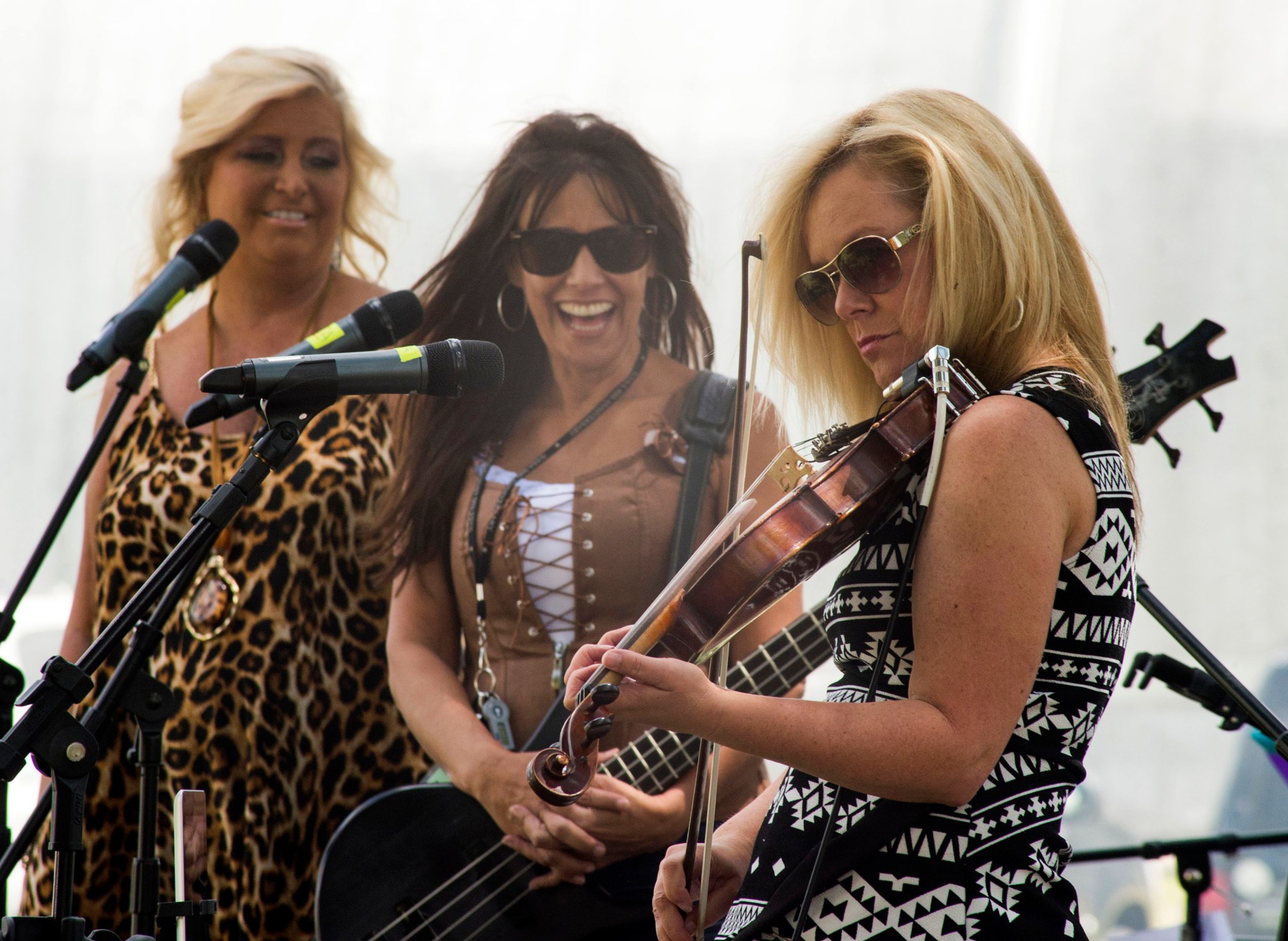
Huntsville-area band 3Way Handshake — which includes Marshall network engineer Holly Wales, center, along with Sylvia Dean, left, and vocalist Kim Smith — performs at the Summer Blast. The band is a classic rock, blues and country combo which also features Marshall engineer Rusty Morphew. (NASA/MSFC/Emmett Given)
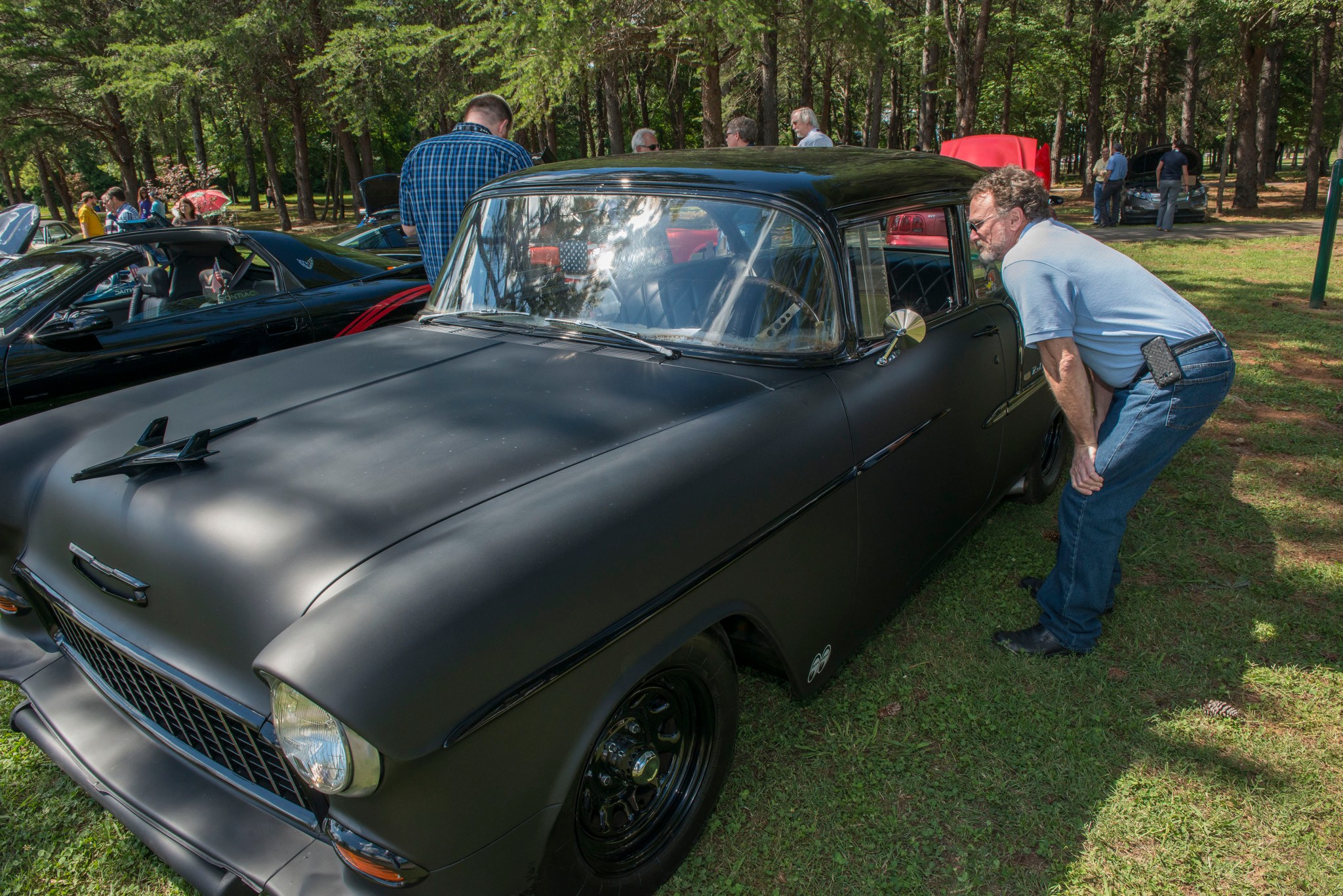
Summer Blast participant Peter Petkas, a Jacobs senior systems engineer supporting the Engineering Directorate’s Propulsion Systems Department, checks out Marshall information technology specialist Jonathan Gokee’s vintage 1955 Chevrolet Bel Air during the Summer Blast car show. Nearly two-dozen classic and modern vehicles were on display June 8. Mission Operations Laboratory project integrator Sam Digesu’s 1971 Corvette Stingray was chosen best-in-show by Marshall Exchange judges. (NASA/MSFC/Fred Deaton)
This Week in NASA History: Fifth Spacelab Mission Returns to Earth — June 14, 1991
This week in 1991, the space shuttle Columbia and STS-40 landed at Edwards Air Force Base following a successful nine-day mission. This was the fifth dedicated Spacelab mission and the first solely dedicated to life sciences. Spacelab was a reusable laboratory flown on select shuttle flights. Here, the laboratory module is visible in the orbiter’s cargo bay. NASA’s Marshall Space Flight Center managed the Spacelab program for NASA. Today, the Payload Operations Integration Center at Marshall serves as “science central” for the International Space Station, working 24/7, 365 days a year in support of the orbiting laboratory’s scientific experiments. The NASA History Program is responsible for generating, disseminating, and preserving NASA’s remarkable history and providing a comprehensive understanding of the institutional, cultural, social, political, economic, technological, and scientific aspects of NASA’s activities in aeronautics and space. For more pictures like this one and to connect to NASA’s history, visit the Marshall History Program’s webpage. (NASA)








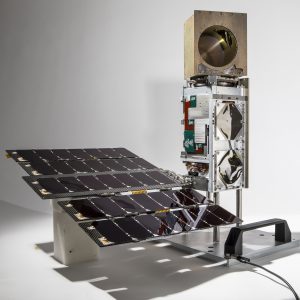









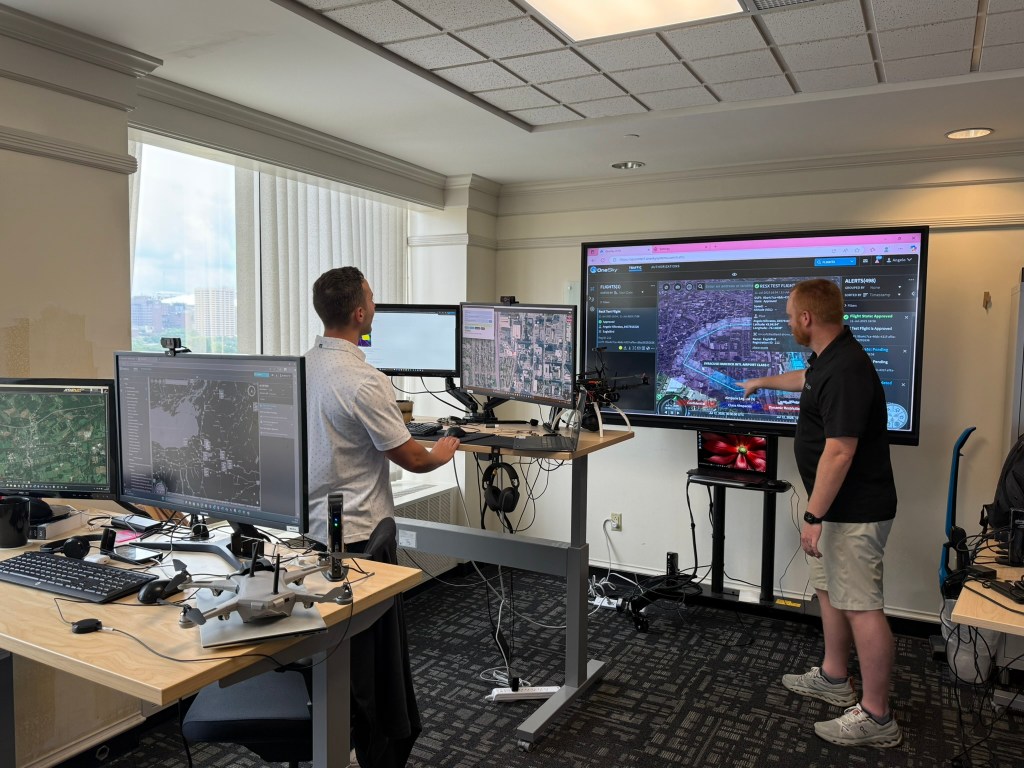


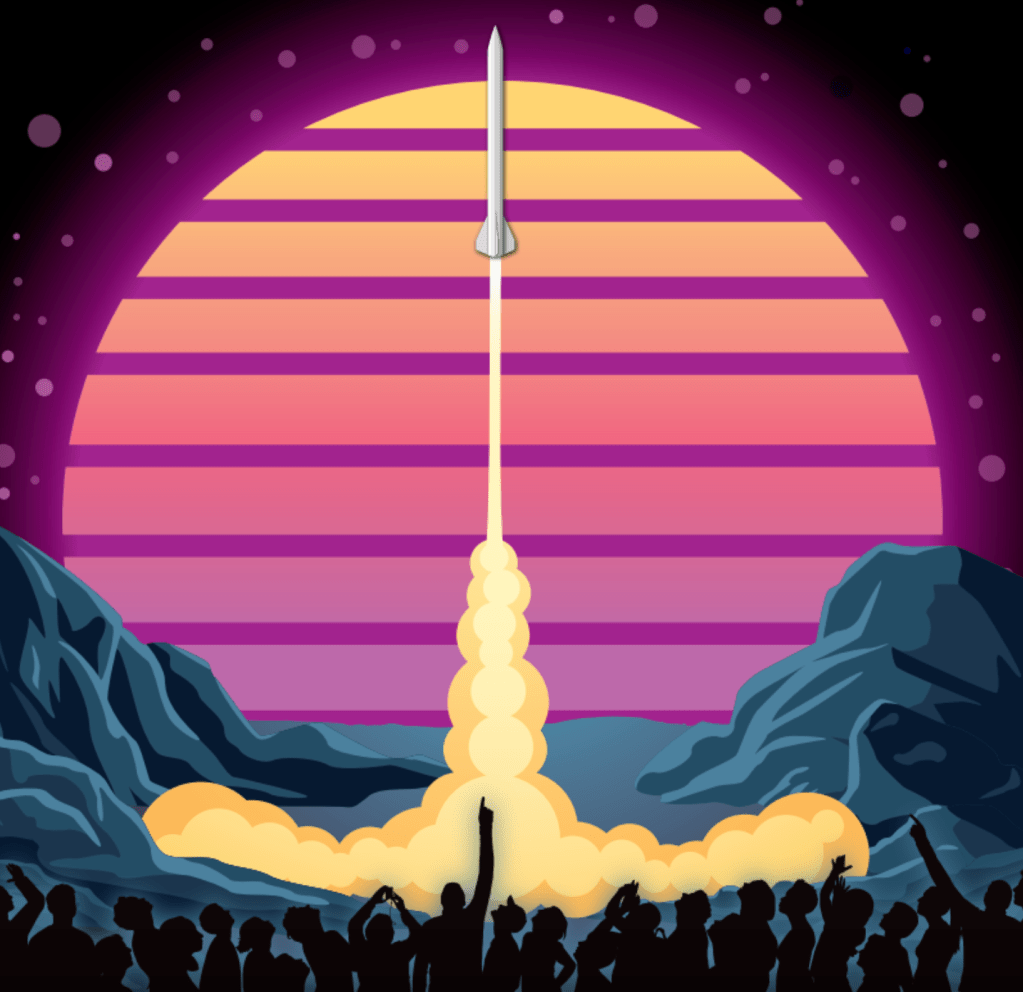

-Carolyn_Y._Ng.jpeg?w=1024)



